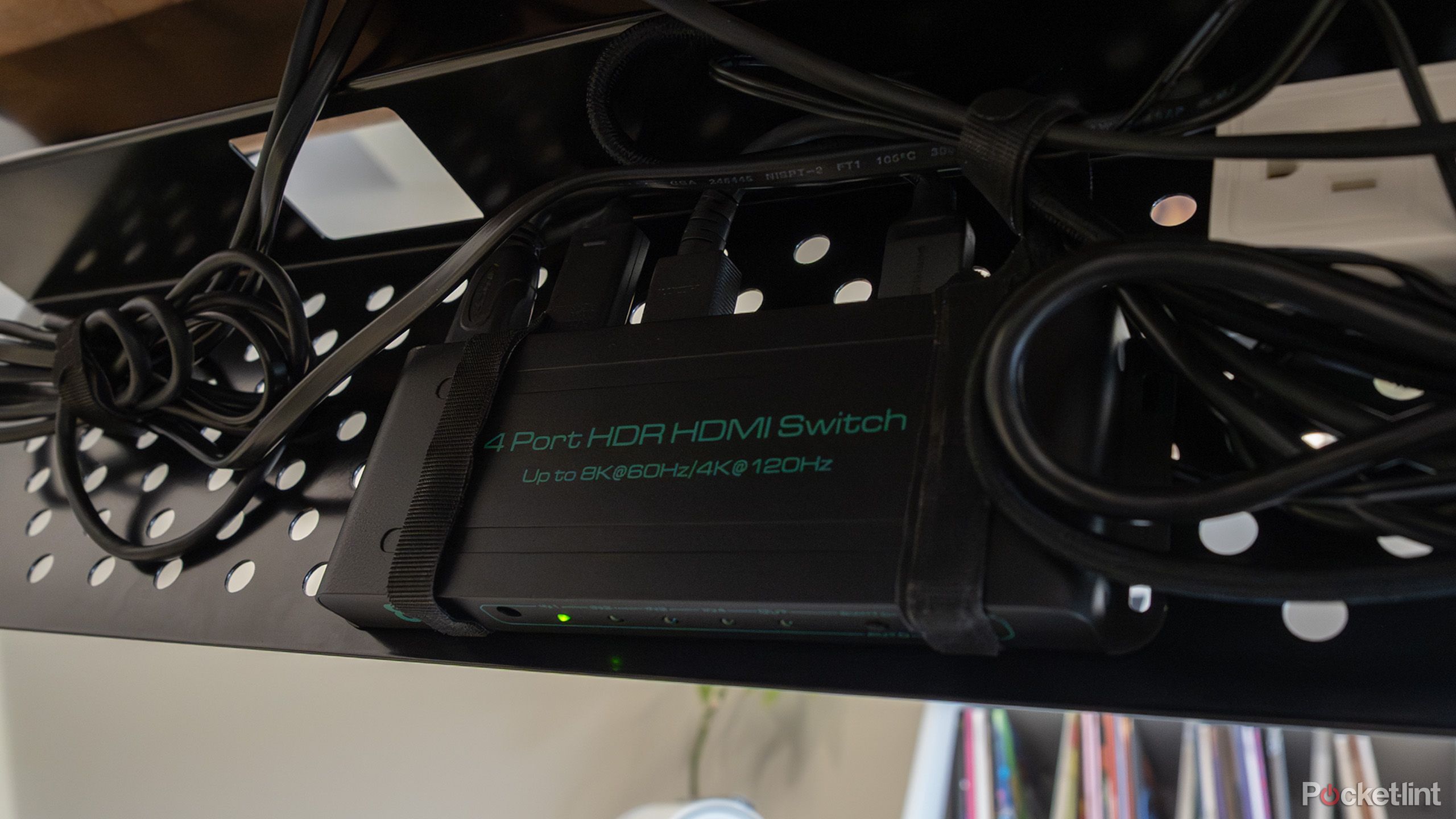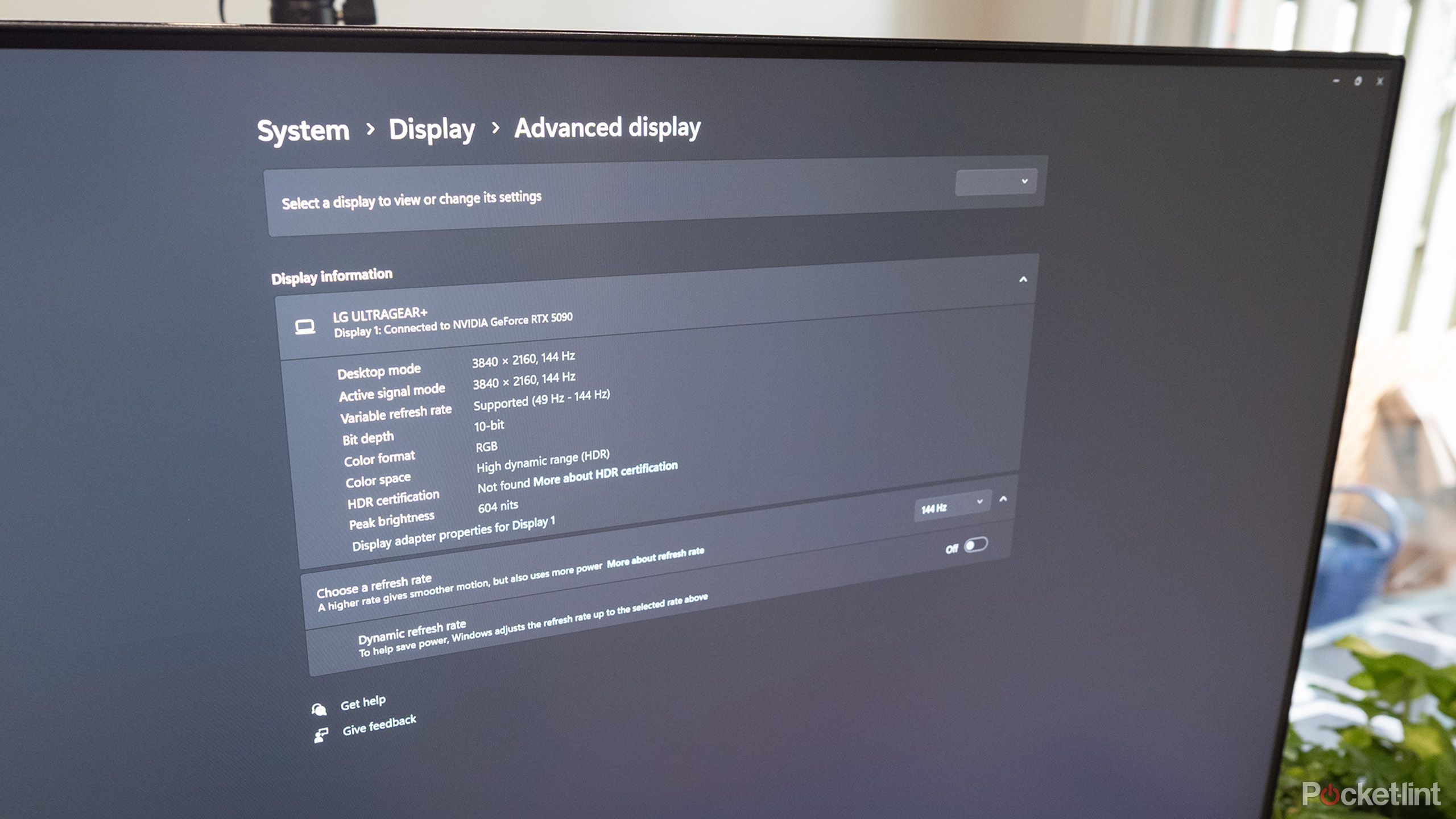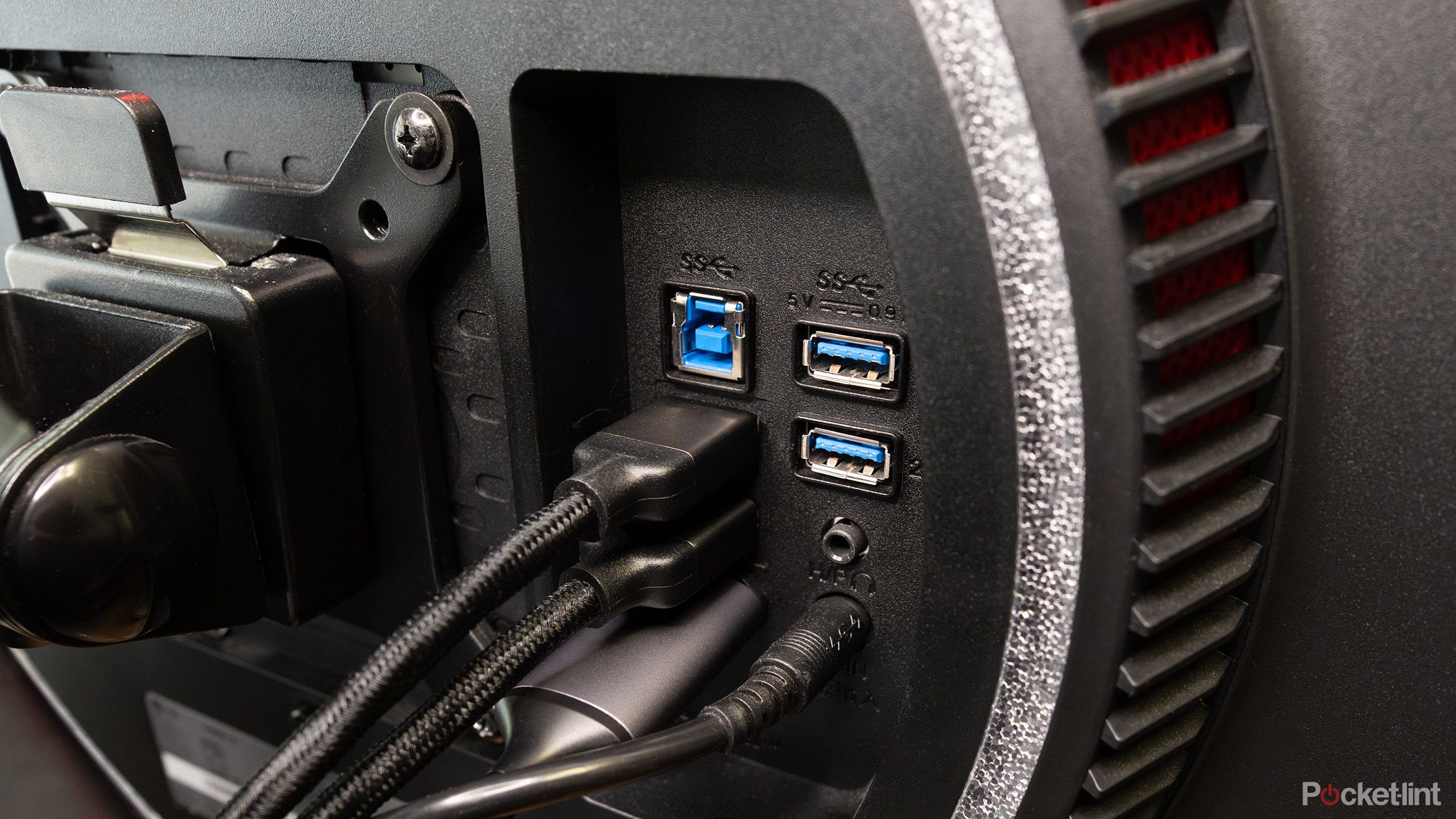Abstract
- Utilizing Extremely Excessive Pace HDMI cables ensures compatibility with excessive refresh charges like 144Hz.
- Monitor firmware updates and navigating to particular show settings can unlock increased refresh charges like 144Hz.
- Understanding HDMI 2.1 bandwidth complexities is significant for optimum efficiency with trendy graphics playing cards.
I just lately bought my palms on a ridiculously highly effective Asus ROG G700 (2025) gaming rig outfitted with Intel’s Core Extremely 7 Processor 265F and Nvidia’s GeForce RTX 5090. I am effectively conscious that that is overkill for Halo Infinite and Age of Empires IV — the 2 video games I play most incessantly — however when an organization reaches out and provides you the prospect to check out a PC this highly effective, it is tough to say no.
My basement workplace setup is considerably difficult. I’ve a Change OLED mannequin, a PlayStation 5 Slim, a Xbox Sequence X, and a M3 Professional Max MacBook Professional, all hooked as much as a 27-inch LG UltraGear 27GP950-B, a comparatively well-reviewed, however now discontinued monitor that dropped again in 2021. On the time, it was one of many few screens on the market that featured full bandwidth HDMI 2.1, opening the 4K 120Hz floodgates for the few supported video games on the PS5 and Xbox Sequence X (actually, it was largely only for Halo Infinite on the Xbox Sequence X). Help for NVIDIA and FreeSync Premium Professional is an added bonus, too.
“Although this setup is considerably difficult, it is labored fairly flawlessly — not less than till now.”
To set the stage relating to my problem, it is necessary to say that this monitor has a really commonplace variety of ports. There’s DisplayPort 1.4 — which I take advantage of with my MacBook and a USB-C-to-DisplayPort 1.4 cable to get 120Hz output to the monitor — and two HDMI 2.1 ports. For years, I’ve used one HDMI 2.1 port for my Xbox Sequence X and the opposite for an HDMI 2.1-capable switcher that my Change OLED Mannequin and PS5 Slim are plugged into. I’ve no clue what model this HDMI switcher is, however again once I purchased it in 2020, it was one of many first out there on Amazon (it appears to have been discontinued since I am unable to discover it anymore).
Although this setup is considerably difficult, it is labored fairly flawlessly — not less than till now.
Silkland 10K 8K HDMI 2.1 Cable
This HDMI 2.1 Extremely Excessive Pace cable from Silkland is 4K/240Hz, 144Hz 120Hz, and 8K@60Hz succesful.
- Size(s)
-
1-50ft
- Supplies/Development
-
Braided
- Capability
-
4K/240Hz 144Hz 120Hz, 8K/60Hz
- Model
-
Silkland
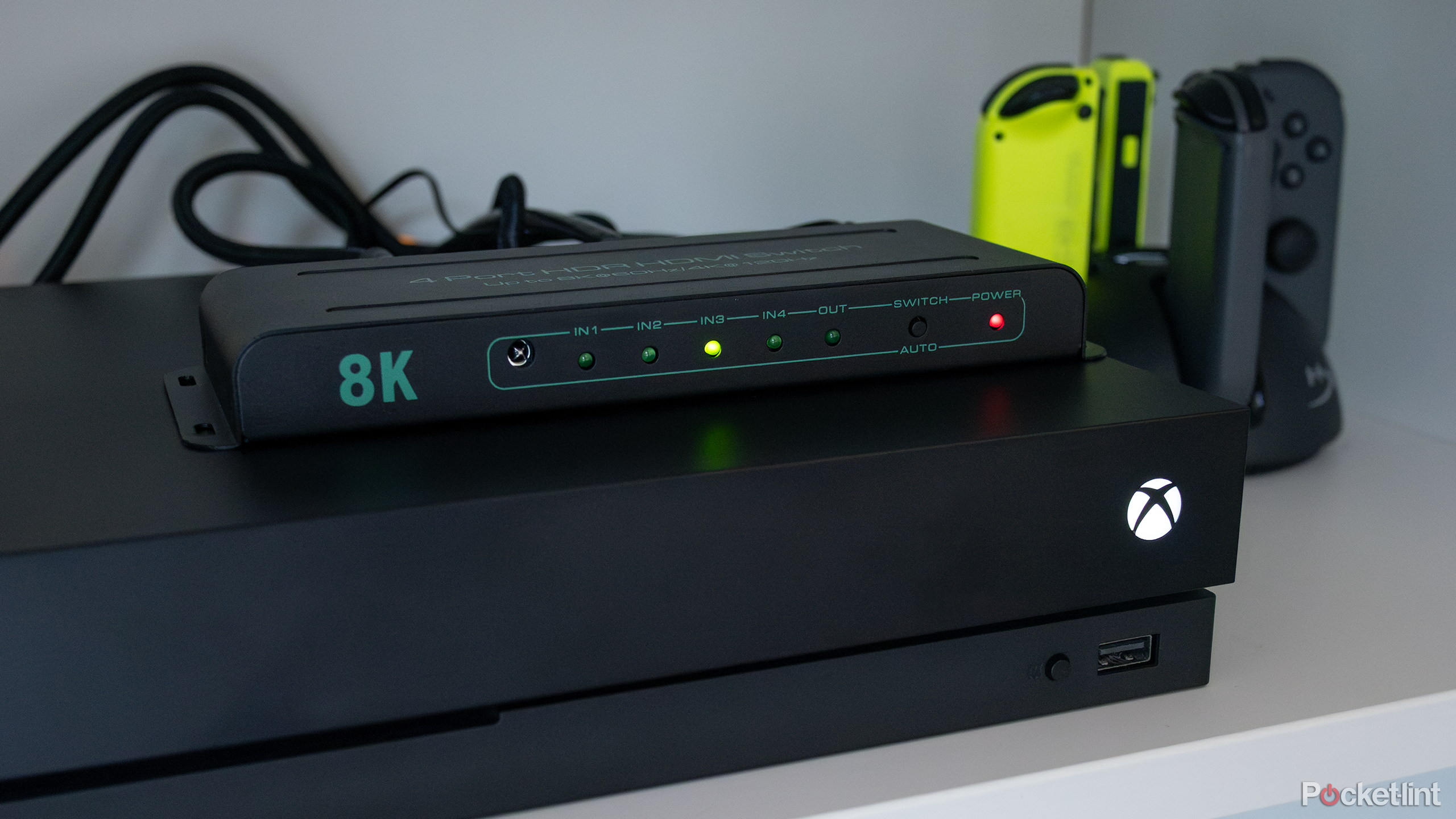
Associated
This $40 HDMI accessory saved my sanity
Who knew this tiny, comparatively low cost system might resolve all of my TV connection woes?
In the event you’re in search of a dependable HDMI 2.1 cable that is additionally inexpensive, Silkland’s 10K 8K HDMI 2.1 Cable is a superb choice (I personal roughly 8 at this level).
HDMI continues to be a complicated mess
Increased bandwidth cables make issues much more difficult
I rapidly decided that plugging the Asus ROG G700 (2025) into my HDMI 2.1 switcher could be the best answer to my drawback. Nevertheless, no matter what I attempted, I could not determine a approach to get my 144Hz-capable (160Hz in the event you overclock it and use show stream compression) monitor to push previous 120Hz over HDMI 2.1, regardless of the port format supporting the 48Gbps bandwidth switch. I might navigate to Superior underneath Show Settings and 120Hz remained the one choice.
“The ROG Astral RTX 5090 is among the first graphics playing cards to characteristic two HDMI 2.1 ports.”
Here is the place I attempted just a few issues. I hooked the Asus ROG G700 (2025) up by way of Show Port 1.4 to see if the 144Hz choice appeared in Home windows 11’s Superior Show Settings. Fortunately, it did. I then tried a unique HDMI cable after noticing the one I used to be utilizing did not say “Extremely Excessive Pace” on it and as an alternative was labelled “Excessive Pace.” HDMI 2.0 10.2Gbps Excessive Pace cables can hit 4K/30Hz (there’s additionally HDMI 2.0a and HDMI 2.0b that assist 18Gbps — these are generally known as Premium Excessive Pace HDMI cables), whereas 48Gbps Extremely Excessive Pace cables can attain a most of 8K/60Hz and 4K/120Hz/144Hz. I additionally ensured the HDMI cable operating out of the switcher was Extremely Excessive Pace appropriate. Confused but? I don’t blame you.
Sadly, this nonetheless did not resolve the problem. At this level, my subsequent guess was that the HDMI switcher was one way or the other the supply of my woes, so I grabbed the HDMI 2.1 switcher I’ve been using in my living room. Whereas this one labored, 144Hz nonetheless did not present up as an choice. My guess is that the majority switchers can solely deal with 120Hz and never 144Hz, regardless of technically being able to supporting the bandwidth. This is sensible given HDMI 2.1 144Hz is comparatively new within the PC house, and the ROG Astral RTX 5090 is among the first graphics playing cards to characteristic two HDMI 2.1 ports.
The subsequent step was to skip the switcher and plug the ROG G700 (2025) instantly into my monitor’s HDMI 2.1 port. Sadly, the 144Hz choice nonetheless did not seem in Home windows 11. Does HDMI 2.1 simply not assist 144Hz? Are all of the Reddit threads I learn over the previous a number of hours simply solely unsuitable?
Earlier than you scroll right down to the feedback to inform me that DisplayPort 1.4 is best than HDMI 2.1 and that I should not be making an attempt to do that in any respect, the previous port choice with a USB-C-to-DisplayPort-1.4 cable is the one simple approach to get my MacBook Professional to hook up with an exterior monitor at 120Hz. You may get it to work over HDMI 2.1, nevertheless it’s a very complicated process.
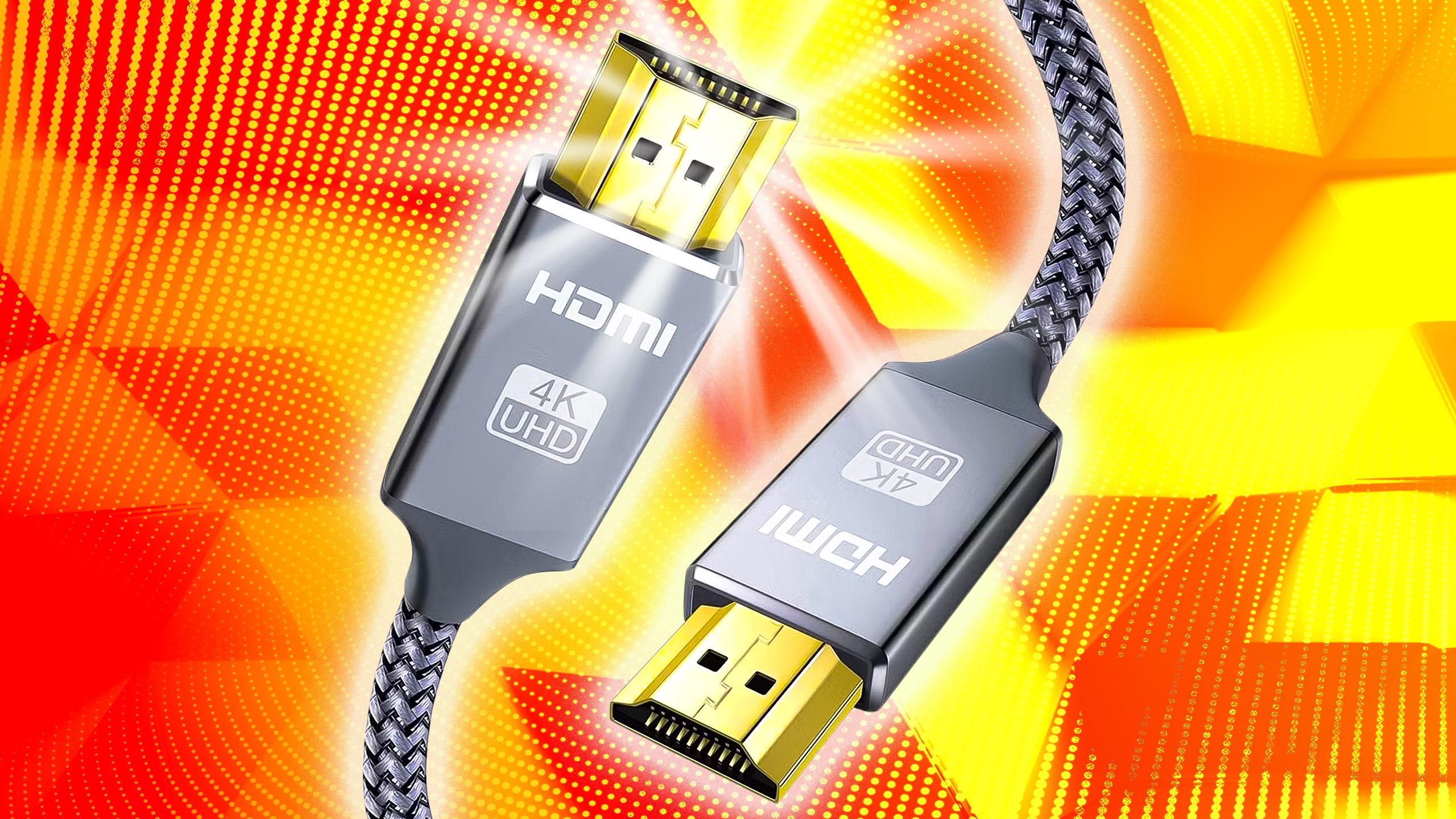
Associated
I can’t believe no one is talking about this massive HDMI problem
With so many units, TVs are struggling to maintain up with the HDMI drawback.
Be sure that your monitor is up to date and all the time use Extremely Excessive Pace cables
Welcome to the wild work of HDMI 2.1
It seems that I wanted to replace my monitor through a USB-B cable by way of LG’s OnScreen app so as to add 144Hz HDMI 2.1 compatibility. Subsequent, I navigated to the UltraGear 27GP950-B’s Settings and chosen Common. Then I scrolled previous the primary row of choices to get to HDMI Extremely HD Deep Coloration and chosen the 144Hz choice. Like magic, the flexibility to set the monitor to 144Hz appeared in Home windows 11’s Superior Show Settings. Why is that this setting listed as being associated to paint and never refresh fee? I’ve no clue. My
55-inch Hisense U8H
has the same setting for its one HDMI 2.1/120Hz port.
So what have I realized from this expertise? First, I am all the time going to ensure my monitor is updated with the most recent firmware. On prime of that, once I’m coping with high-bandwidth resolutions and refresh charges like 144Hz/4K, I now know it is necessary to double-check what sort of HDMI cable I am utilizing and to solely persist with Extremely Excessive Pace cables. You possibly can often determine these cables by the Extremely Excessive Pace label on them alongside the 8K (they’re sometimes braided, too).
Hopefully, this convoluted journey by way of the world of HDMI and excessive refresh charges helped you out not directly. Within the coming weeks, I will have extra on Pocket-lint about my return to PC gaming and the Asus ROG G700 (2025).

Associated
Is the Galaxy S25 Edge really worth $1,100? I went hands-on and here are my thoughts
The primary skinny cellphone has arrived, however does it stay as much as the hype?
Trending Merchandise

Lenovo New 15.6″ Laptop, Inte...

Thermaltake V250 Motherboard Sync A...

Dell KM3322W Keyboard and Mouse

Sceptre Curved 24-inch Gaming Monit...

HP 27h Full HD Monitor – Diag...

Wi-fi Keyboard and Mouse Combo R...

ASUS 27 Inch Monitor – 1080P,...

Lenovo V14 Gen 3 Enterprise Laptop ...



